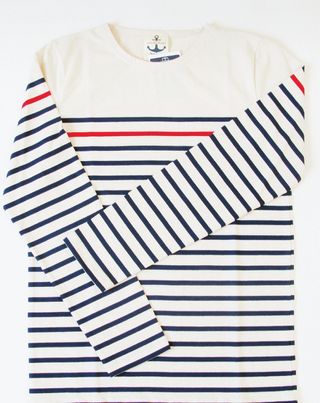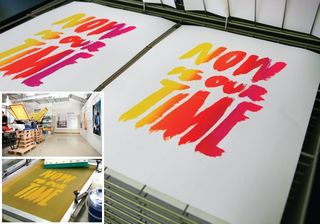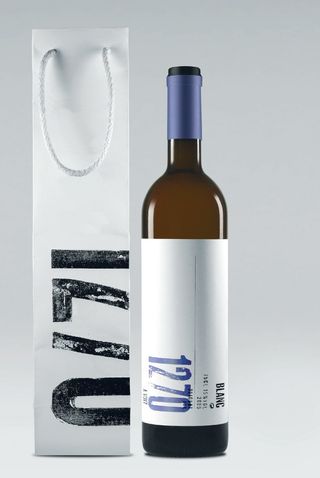Trend report: The real thing
Mass production and digitalisation have given consumers a yearning for hand-crafted products with heritage, causing designers to reimagine tradition and authenticity
Demand for handcrafted products has surged in recent years. This is partly due to global turbulence driving consumers to reminisce about the past, and also due to a rejection of mass-production in favour of quality, crafted products that emotionally resonate with customers. It is about creating a connection between maker and consumer; a silent dialogue that is reciprocated through appreciation of products and the stories behind them. Consumers, faced with increasing financial pressure, are stripping back and placing more value on the objects that surround them, choosing quality over quantity. Just as form follows function, it also follows emotion, as craftsmanship and heritage are communicated by a new generation of designers.
Annabelle Campbell, exhibitions and collections manager at the UK’s Crafts Council, says she has witnessed a big rise in consumer interest in craft. “There is a significant shift in consumer demand towards products and experiences that meet emotional – as well as functional – needs,” she explains. “Nowadays, an awareness of the provenance of a product and rejection of conspicuous consumption means that people are making different decisions about what they buy. Craft is seen as personal, authentic and genuine. An object that has been touched by a human hand resonates in an age that many believe technology has rendered ubiquitous and anonymous.”
Sir Christopher Frayling, the ex-chair of the Arts Council, recently gave a speech at the UK Crafts Council’s 40th anniversary party in which he commented on consumers’ changing attitudes towards craft. ”Crafts are finally being celebrated for being about today and tomorrow as well as yesterday,” he stated. “Crafts are now associated with urban living, interior design, fashion and contemporary design; with the shifting borders of art at one end of the spectrum, and design at the other; with synthetic materials, in all colours of the rainbow rather than brown or beige; and with the outer limits of function.”

The transparency in the production process is another important factor in craftsmanship’s newfound demand. After years of mass-produced (and sometimes unethical) practices, consumers are keen to understand products’ heritage. And the best way to communicate this is for brands to showcase not just the production process, but also the people behind it. People identify with people, so the poeticism in a product’s craft is best communicated through the producers themselves. This fuels consumer desire to see, understand and appreciate what has gone into the making of a product or service.
This call for transparency down the supply chain has also made it impossible for brands and manufacturers to fake authenticity. People are increasingly interested in how products are actually made. Levi’s has recently revived itself through sharing its heritage and being transparent about its production processes, and telling the stories of the people it works with. Earlier this year, Levi’s released a series of film shorts called Made Here, documenting the crafts of its artisan collaborators. The latest film, Centinela Traditional Arts, illustrates the craft and history of master weaver Irvin Trujillo, who makes weavings for the backs of Levi’s limited-edition denim trucker jackets.

The blog Manufacture & Industry, founded by writer Adam Thompson, tells the stories of products and the people who make them. “I think that the mass-produced, flat-pack, oven ready-ness of things has become too much for many people,” he tells us. “There’s also something in the fact that we’re living in unsettling times. People want to know who is providing the things they consume when there’s so much uncertainty elsewhere in their lives.”
Storytelling and narratives are becoming crucial considerations for designers and brands alike. Consumers want to see, feel and experience the narrative of a brand or product, whether it is online or off. The value of artists and designers increasingly needs to transcend simply making pretty things. They are becoming storytellers, using craft, provenance and heritage as narratives to communicate with consumers interested in conversation, not just transaction.
Brooklyn-based boutique chocolatier Mast Brothers is an early adopter of the practice of telling a story about their brand through its production. Since the business’ inception, it has highlighted its deep appreciation for craft and quality by demonstrating how the brothers hand-sort every single cocoa bean and hand-wrap every finished bar on the website. For them, the consumer appeal lies not just in the chocolate, but in what it represents. “The chocolate represents an old way of handcrafting food that feels fresh and new in an age of mass-production,” explains co-founder Rick Mast. The brothers state they firmly believe in the ‘hand’ in hand-crafted, and travel overseas to source the cocoa beans as well as having their own in-house printing press to make the packaging.

Patriot brands
In the UK, it’s undeniably becoming more fashionable to buy British. Consumers are increasingly attracted to locally-manufactured products and brands; a retaliation against the 90s surge of outsourced mass-production. By celebrating local production, brands can offer transparency and better understanding of where their product has come from, appealing to consumers who want to feel connected with the products they buy.
The Manufacture & Industry blog was initially intended to spotlight British manufacturing, an often-overlooked part of British history. “I felt I needed to spotlight British produce as there is still this misconception that we don’t make anything anymore. Other countries are far better at promoting their wares,” Thompson tells us. “And, along with exploring craftsmanship and how it allows people to understand how things are made, this is how Manufacturing & Industry was born.”
A recent international study published in the Journal of Consumer Behaviour argued that today’s consumers “prefer domestically-manufactured goods and are often willing to pay a higher price for them. It is only when imported goods are of significantly superior quality that consumers will pay more to obtain them.” Brands that focus on their roots and their geographic location appeal to consumers who want to feel in-touch with the products they buy.
This patriotic revival has gone global. In Japan a new television show, Made In Tokyo, highlights fashionable locally produced products. In Russia, patriotic ad campaigns linked to a scrap scheme have driven sales of Russian cars up 31 per cent year-on-year, according to the Association of European Businesses.
Get the Creative Bloq Newsletter
Daily design news, reviews, how-tos and more, as picked by the editors.

Thank you for reading 5 articles this month* Join now for unlimited access
Enjoy your first month for just £1 / $1 / €1
*Read 5 free articles per month without a subscription

Join now for unlimited access
Try first month for just £1 / $1 / €1
The Creative Bloq team is made up of a group of design fans, and has changed and evolved since Creative Bloq began back in 2012. The current website team consists of eight full-time members of staff: Editor Georgia Coggan, Deputy Editor Rosie Hilder, Ecommerce Editor Beren Neale, Senior News Editor Daniel Piper, Editor, Digital Art and 3D Ian Dean, Tech Reviews Editor Erlingur Einarsson, Ecommerce Writer Beth Nicholls and Staff Writer Natalie Fear, as well as a roster of freelancers from around the world. The ImagineFX magazine team also pitch in, ensuring that content from leading digital art publication ImagineFX is represented on Creative Bloq.
